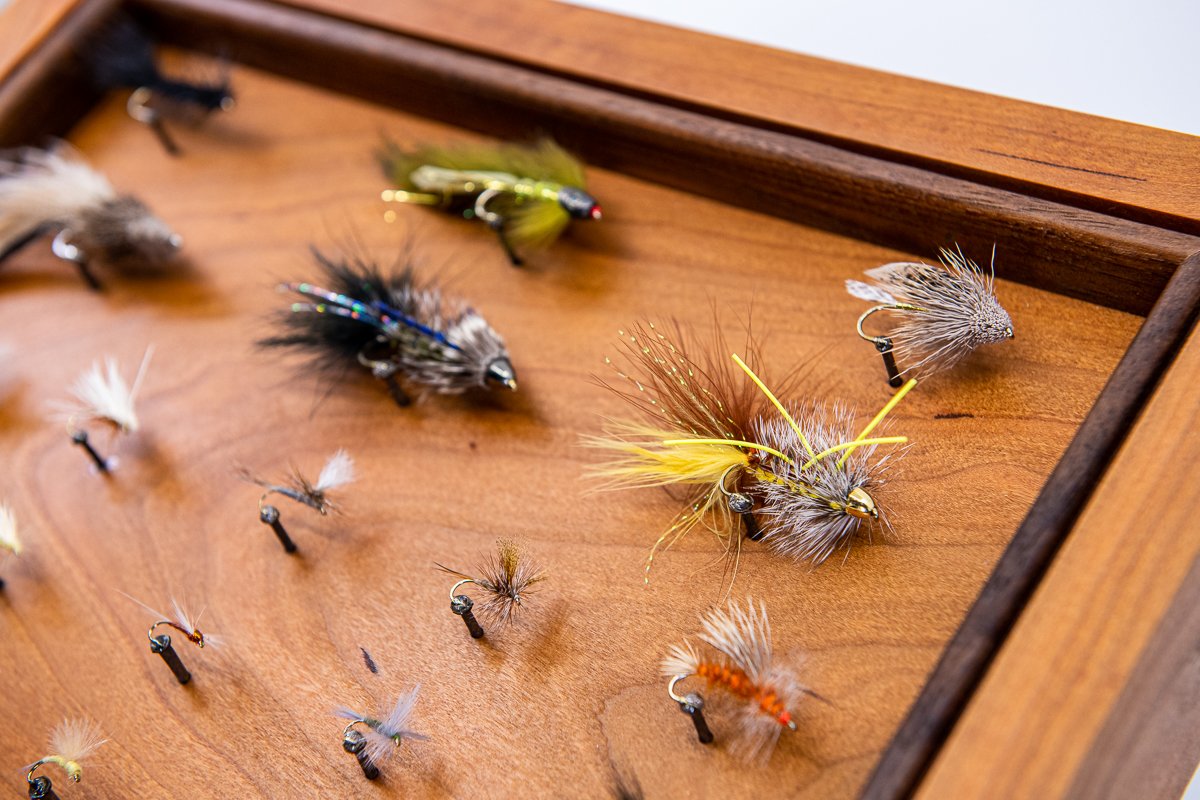
About each fly
-

Wooly Bugger
The Wooly Bugger imitates everything from larger freshwater nymphs, baitfish, and leeches, to saltwater crayfish, shrimp, and crabs. It’s commonly referred to as a “streamer pattern,” or a wet fly, and is fished under the surface of the water, often using a sinking line. The origins of the Wooly Bugger aren’t particularly clear, but fly tyer Russell Blessing is given credit for tying the pattern in the 1960s. The Wooly Bugger, or “bugger” for short, is found in every fly angler’s box, and can be an incredibly effective pattern on trout streams during a rainstorm or overcast day. The pattern is tied in a number of variations and in nearly every color imaginable.
-

Zonker
A classic take on a baitfish pattern, the Zonker is one of the most effective streamer patters ever created. Dan Byford is credited with inventing the pattern in the 1970s when he began using rabbit fur to tie his streamers instead of traditional feathers and bucktail. When you fish a zonker pattern, the first thing you’ll notice is how the natural fur imitates a baitfish darting away from a predator. This pattern can be fished on any trout river and is a generic and effective streamer pattern that should be in every angler’s fly box.
-

Muddler Minnow
The Muddler Minnow has its roots in Minnesota, but was popularized in Montana by Dan Bailey. The pattern is often tied with a spun deer hair head and when complete, imitates a sculpin, baitfish, or drown terrestrial. The pattern has inspired a number of spin off patterns, including Spuddler, Muddler Hopper, Mizzoulian Spook, Searcy Muddler, Keel Muddler. When it comes to catching large predatory trout and salmon, the Muddler Minnow or one its contemporaries is often the fly of choice.
-

Wooly Bugger
The Wooly Bugger imitates everything from larger freshwater nymphs, baitfish, and leeches, to saltwater crayfish, shrimp, and crabs. It’s commonly referred to as a “streamer pattern,” or a wet fly, and is fished under the surface of the water, often using a sinking line. The origins of the Wooly Bugger aren’t particularly clear, but fly tyer Russell Blessing is given credit for tying the pattern in the 1960s. The Wooly Bugger, or “bugger” for short, is found in every fly angler’s box, and can be an incredibly effective pattern on trout streams during a rainstorm or overcast day. The pattern is tied in a number of variations and in nearly every color imaginable.
-

Zonker
A classic take on a baitfish pattern, the Zonker is one of the most effective streamer patters ever created. Dan Byford is credited with inventing the pattern in the 1970s when he began using rabbit fur to tie his streamers instead of traditional feathers and bucktail. When you fish a zonker pattern, the first thing you’ll notice is how the natural fur imitates a baitfish darting away from a predator. This pattern can be fished on any trout river and is a generic and effective streamer pattern that should be in every angler’s fly box.
-

Muddler Minnow
The Muddler Minnow has its roots in Minnesota, but was popularized in Montana by Dan Bailey. The pattern is often tied with a spun deer hair head and when complete, imitates a sculpin, baitfish, or drown terrestrial. The pattern has inspired a number of spin off patterns, including Spuddler, Muddler Hopper, Mizzoulian Spook, Searcy Muddler, Keel Muddler. When it comes to catching large predatory trout and salmon, the Muddler Minnow or one its contemporaries is often the fly of choice.


